
Not surprised at all. The Orange Turd is trying to bring everyone down to his terrible level of existence.
Then created a car so good that the CEO of Ford does not want to give it up. Impressive indeed.
I am now scared of anything orange. Thanks Donald.
He created his own surprise by giving a mic a blowjob on the stage. Just another day with the Orange Turd leading a MAGA idiot charge.
In the case of America we are a government by popular election and control in its composition through this vote.
We have had and continue to have a democracy. It may not be the form of democracy you like but no need to pretend otherwise.
Well I guess we could boot him from the country.
The problem is China is progressing so rapidly in all three of these areas that there is great concern for western car companies.
Not trying to sell you anything.
Andreessen Horowitz founders Marc Andreessen and Ben Horowitz said on their podcast that Chinese automakers have developed high-quality and affordable vehicles supported by a robust supply chain ecosystem.
With the American auto industry struggling with slowing growth in its EV market, American automakers need to be able to offer a compelling $20,000 EV that also competes on quality if the US doesn't want to "lose the auto industry," Andreessen said.
"What China has now is not just really good car companies, but they've got this entire constellation of supply chain componentry," Andreessen said.
China's government has spent at least $230 billion to support electric vehicle makers such as BYD since 2009, according to a study published in 2024 by the Centre for Strategic & International Studies think tank.
Andreessen said that Chinese car brands are outperforming American EV automakers in affordability and quality, calling them "super technologically sophisticated."
"For example, they've got this feature where you just come in, and you just drop your phone down on the center divider, and basically, the car lights up," he said. "The whole system inside the car comes off your phone — like all your music and your maps and your calendar and all that stuff is just automatically there."
The venture capitalist also highlighted other features, such as customized dancing animations in the LED headlights that greet the driver and self-driving capabilities, which are already integrated into several lower-cost Chinese EVs.
To keep up, American automakers need to be able to offer a similarly affordable and full-featured car at the $20,000 price point, Andreessen said.
Meta has announced one of the biggest updates to Meta Quest yet, with a long list of new features and improvements.
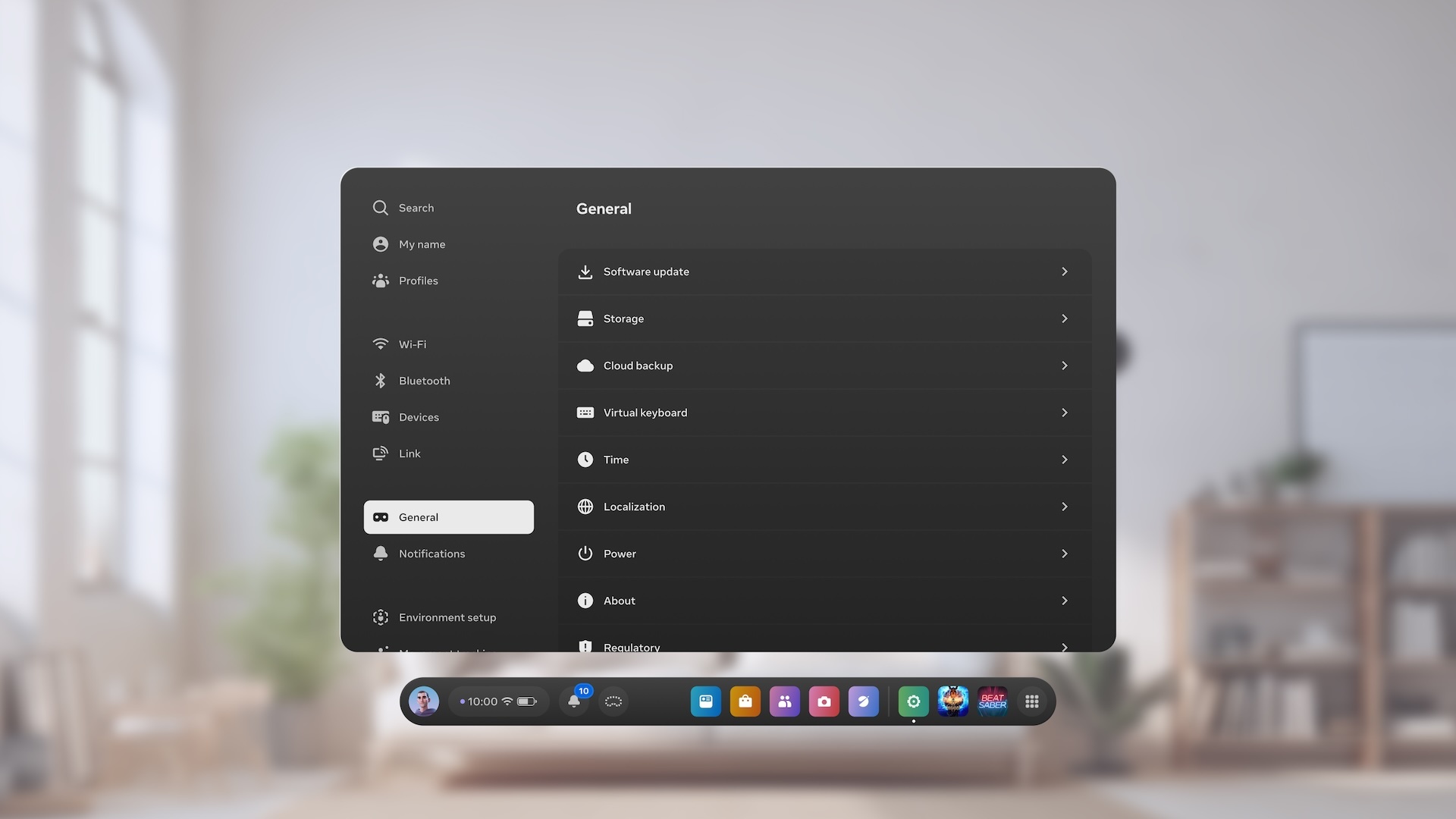
The v71 firmware update will be rolled out to Quest 3, Quest 3S, Quest 2 and Quest Pro owners beginning November 4, 2024. As always, it may take up to a week or more for the update to reach all users.
This update is one of the biggest in recent years and includes the following new features and enhancements:
A new look for Horizon OS: Meta has optimized the dark and light theme of Quest's operating system to improve the readability and contrast of the menus. Other improvements include the appearance and behavior of the control panels, the position of the control bar, the colors of various interface elements, and much more. The Meta Quest settings have also been completely redesigned, and the search function has been improved. Continuous Space Setup: You can now continue with your room setup and update your room scan with a new room layout and furniture instead of having to create a fresh new room scan. Meta Quest will also now display a representation of the scanned environment after you have scanned the room and when you return to the Space Setup to update the scan. Passthrough improvements: Meta says it has adjusted the frame rates of the cameras to match the frame rates of the display. More realistic facial expressions for Meta avatars: A new AI feature called Audio to Expression derives convincing facial expressions and lip sync signals from microphone input. A similar feature called Lipsync already existed, but it only animated the mouth, while Audio to Expression covers the upper half of the face, including the upper cheeks, eyelids, and eyebrows. Dolby Atmos and Dolby Digital Surround: Meta Quest now supports Dolby Atmos and Dolby Digital Surround in selected browser content. Meta plans to expand support for other content providers in the near future. Improvements for Meta Quest Link: Meta's solution for PC VR streaming is now enabled by default and the Meta Quest Link PC app has been enhanced in several ways: Remote Desktop is now part of the PC app, eliminating the need to download a separate app, and the option to connect can now be found in the Quick Settings. Another new feature is the ability to cast your headset content to the Meta Quest Link PC app. Previously, casting to second screens was only supported via the mobile Meta Horizon app, Chromecast, and browser. Volume mixer: Meta has implemented a volume mixer that lets you adjust the volume of calls, apps, and media independently of each other (see video). You can find the volume mixer in the Quick Settings by clicking on the advanced option next to the main volume. Improved travel mode: Travel mode has been extended to include trains. Previously, only air travel was officially supported. Calendar app: A new calendar feature helps you keep track of important appointments (see video). It supports integration with Google and Outlook calendars and provides direct access to events in Horizon Worlds and meetings in Horizon Workrooms. More transparency for app notifications: The universal menu now shows in real time what permissions apps are accessing. Share videos in Horizon Chats: You can now send and receive video using the Horizon chat feature, either in VR or through the companion app. This also works with spatial videos. You can read the full release notes for the v71 update in the Meta Quest Release Notes.
VR is changing society in places we don't talk about in public much.
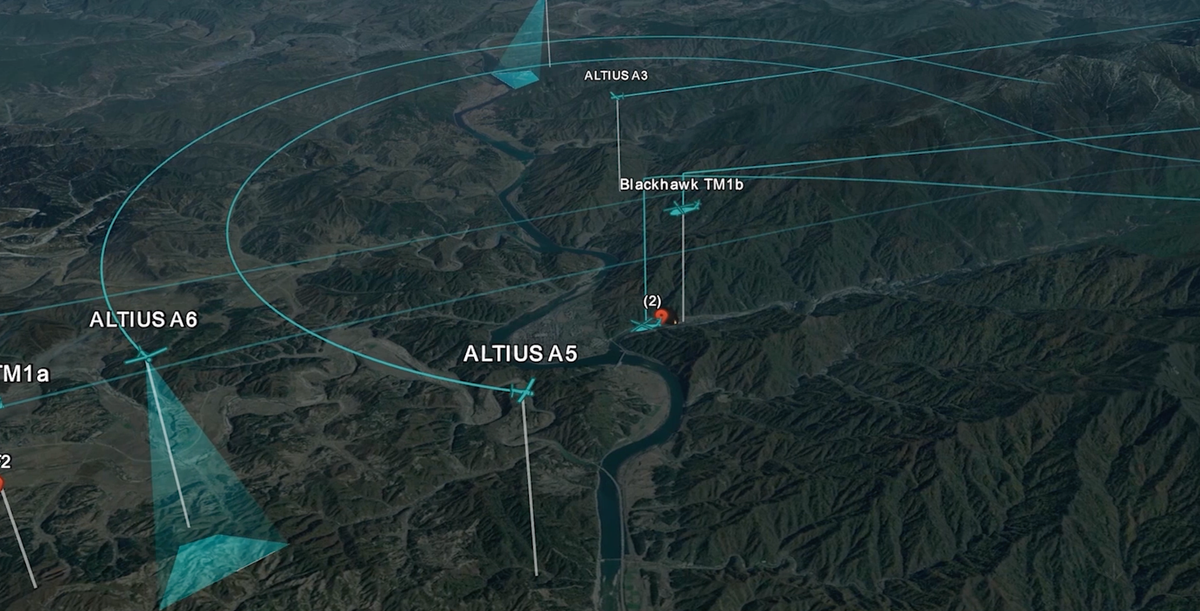
War
We call those particular head-mounted displays First Person Viewers, but the biggest difference from consumer VR headsets is that they are single-purpose devices rather than general purpose computers. Instead of multitasking computing power, they feature long-range antennas designed to transport the operator into the body of a fast-moving flying machine packed with explosives. So what happens when you hook up an antenna to a general-purpose computer like the $300 Quest 3S? Does it offer any benefits over the dedicated FPV headset? Anduril’s page for command and control already outlines the general idea while depicting the older Quest 2. A fleet of aircraft or satellites could map the landscape from far above and draw the surrounding terrain with all the people inside it. Such a tool, laying out the physical world in front of you like the chess pieces on a game board, could look much like the playful app Wooorld, one of the best mixed reality experiences, whose users simply revisit their childhood home or play geography quizzes with friends. Floating above that live 3D map will be a 1080p virtual display, bigger than a 70-inch television mounted to a wall, showing the live view of an explosive-packed low-altitude remote-controlled drone that’s closing in on-the-ground targets. Meta’s recent updates to Quest headsets, which bring multitasking to Horizon OS, could offer side panels with relevant information or even views to backup drones. What’s more effective than commanding a single explosive-packed drone? As soon as it explodes, the pilot’s eyes turn to the next one. Each aircraft obliterates itself like a World War II kamikaze, without the loss of the pilot, as the next death package is already ready for a final run.
Sex
VR is also used in large numbers by adults to partake in a more impactful kind of sexual interaction than traditional “sexting”. Any partner you want can seem to perform any act you desire with bluetooth-connected accessories remotely connecting the actions of these individuals in real-time. It’s already a more common aspect of modern sex than most people realize, and you can look at the economics of OnlyFans ($6.3 billion in gross revenues for 2024) for an indication of its reach. With the Internet moving bits, and a head-mounted display delivering embodiment, VR enables sex which neither transmits disease through contact nor results in unwanted pregnancy. What is risked by handing over the most fundamental of human bonding and evolution to the Internet as intermediary? Many people already lament leaving their first impressions to swipes on photos, but those connections are often still geo-restricted because many people value what they learn from the smell, taste, and warmth of another’s skin before committing long-term to significant time together. VR is changing this particular game, so to speak, and we’ll discover how relationships and people change as we go. The key thing to convey here is that this transformation is already well underway.
He has taken control of the supreme court in this first term and in his next he will finish the job for all courts he has access to. If it is an official act he can do it without fear of prosecution .
I would prefer that he leaves the country.
On the price side Apple is bringing out a new SE in 2025. Should be cheap. The First issue I don’t know about so can’t respond (torrenting).
Checking.
He has to show Putin that he is still his boy.
Just don’t.
Now hall his ass into court.
In that case the FTC chair has my full support.
We are a two party system deal with it.
Too much for Newt. That is something.
It is far more than that.
China is a land not just of dragons but of rapid electrification of all forms of transport, in particlar electric passenger cars.

Sometimes reading the stats is not enough. I like to see for myself. So, we went to China. We had been looking forward to cruising the Yangtze River upstream from the Three Gorges Dam and thought it an opportune time to see what “53% of new cars sales in China are plugins” looked like in the flesh — so to speak. The short answer is: spectacular! “What do all the green number plates mean?” the tour guide was asked repeatedly by our group. “Green number plates means the car is electric!”
We had been in China 8 years ago, and the transformation since then has been dramatic. The country is much wealthier. We landed in Chengdu (a city of over 25 million) and were immediately impressed by the fact that most cars on the road were less than 5 years old. (The Chinese government is giving incentives to update to cleaner, newer cars. I wonder where all the old ones went? Scrap metal by the looks of it.) Gone were the human-powered vehicles and the three-wheeled, smoke-spewing rickshaws. There were even fewer motor scooters — and the ones that were on the road were — you guessed it — electric.
I am a gas car fan, but not in the normal way. Most self-described combustion aficionados mean they've owned a few fun cars, maybe wrenched on one or two and usually kept up with whatever's on the cover of the magazines. But I went a little further into that world. I didn't own a few cars. I owned 13 gas-burners over the course of 5 years, almost all of them old and beaten up. I didn't just read the magazines, I built my life around working for one, then became the reviews editor at Road & Track. But when I got the call to work at InsideEVs, I knew it was time to take a step into the future.
I leased a new EV. It's a 2024 Chevy Blazer EV, and I love it. Let me explain why.
Its powertrain is quieter than the smoothest BMW inline-six. It rides beautifully because it isn't trying to be a sports car or a truck. And the technology I've derided as a built-to-last enthusiast turns out to be quite charming in my day to day life. Sure, no screens and a double-din stereo would be more repairable. But it's ok to admit that I like having Google Maps and Spotify built in to my car. I love having a 360-degree camera and a power tailgate. I love knowing I have modern-car safety, with potential life savers like automatic braking with pedestrian detection. The curmudgeon in me wants to complain that humans should be able to drive without electronic aids, but a hundred years of experimenting with that has lead to a lot of deaths.
I love that my car doesn't need to be turned on or off. Like every electronic in my life, it knows to turn itself on when I start using it, and turn itself off when I walk away. I love that it still has overrides to keep it on, or force it off. I love that I can heat up the cabin without waiting 15 minutes for the engine to warm up, regardless of whether I'm driving or using remote start. I love one-pedal driving, and the feeling of a 1-to-1 relationship between my right foot and the rate of acceleration. There's no delay, no waiting for a dawdling transmission to downshift.
Most of all, I love the feeling of driving it at night. I love zooming unto a dark highway, without noise or drama, blasting into the night lit by nothing but LED headlights. I love that moment where there's a quick break in traffic, and one quick press of the throttle rockets me forward with more immediacy than the best internal combustion car can manage. And I love that I can enjoy all of this without any tailpipe emissions.
Sign up for daily news updates from CleanTechnica on email. Or follow us on Google News! Some 295,000 plugin vehicles were registered in Europe in September, rising 6% YoY, which represents the EV market’s return to growth for the first time since April. This is even more significant when you ... [...

Some 295,000 plugin vehicles were registered in Europe in September, rising 6% YoY, which represents the EV market’s return to growth for the first time since April. This is even more significant when you consider the overall market fell by 4%, to 1.1 million units.
Interestingly, BEVs are the ones pushing the market upwards, growing 14% YoY to 212,000 units. PHEVs remain stuck in red, falling 9% in September to 83,000 units.
Looking at the remaining powertrains, only HEVs were positive, growing 12% YoY, while petrol was down 19% and diesel continued to free fall, dropping 24%.
As such, September’s automotive market has seen some seismic changes, with plugin vehicle share of the overall European auto market rising to 26% (19% full electrics/BEVs). Added to the 34% market share of HEVs, that means that 60% of all passenger cars sold in Europe last September had some kind of electrification.
Even more importantly, for the first time, sales of HEVs (34% share) surpassed sales of petrol vehicles (29% share) in September, a trend that is surely here to stay. Meanwhile, diesel (8%) continues to lose relevance every passing day. At this pace, I wouldn’t be surprised if diesel was dead in Europe before 2030, with petrol following it a couple of years later.
These results kept the 2024 plugin vehicle share at 22% (15% for BEVs alone) through the end of September, which is only 1% less than where we were a year ago, at 23%.
Finally, looking at the sales breakdown between BEVs and PHEVs, despite the good result for pure electrics in September, they represented 72% of all plugin sales, and they are at exactly at the same level in 2024 as they were a year ago (67%). With new or refreshed models landing soon for both powertrains — namely, cheaper BEVs and longer range PHEVs — and new CO2 ceilings in Europe, it will be interesting to see how the two technologies behave next year.
The VR hit studio Fireproof Games has unveiled a new game that combines clever puzzles with a spooky atmosphere.

There have been a few teasers over the past few days, but now the cat is out of the bag: Fireproof Games has unveiled a new VR game called Ghost Town.
In Ghost Town, you take on the role of Edith Penrose, a witch turned ghost hunter who runs a successful paranormal investigation agency. Set in 1983, Edith roams the haunted streets of London, tracking down and exorcising restless spirits.
Her world is turned upside down when her brother disappears and a mysterious new lead promises clues to his whereabouts. Edith's journey begins with a visit to a remote Scottish island in the hope that a gifted psychic can provide some much-needed answers.
Four years of development have gone into the new project. If Ghost Town turns out to be as atmospheric, creepy and challenging as The Room VR, then we can expect a real VR highlight. Unfortunately, we don't know exactly when the VR game will be released, but the studio says it's coming soon.
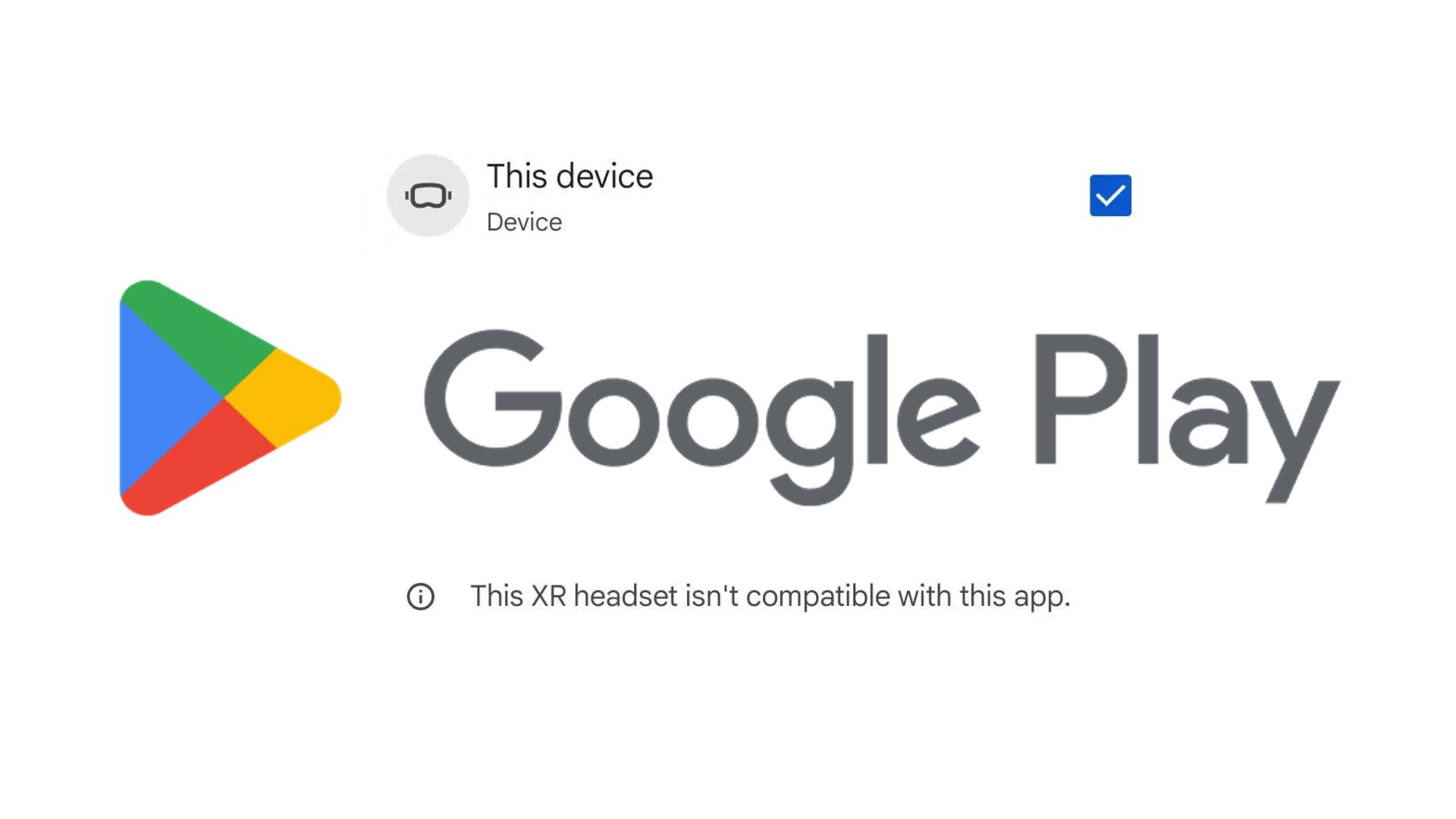
Code discovered in a recent Google Play update indicates the company may soon roll out support for XR headsets on its Android app store, which would mark a decisive shift in the competitive landscape.
As reported by Android Authority, code in version 43.3.32-31 of the Google Play app contains mention of “XR headset,” including a new headset icon that ostensibly indicates whether an app works with the supported device.
Google has technically hosted XR games on Play in the form of Cardboard apps since 2014, which use Android smartphones as ad hoc VR displays—something that was big in kickstarting user interest in the early days of consumer VR, but not so much in the day of standalone headsets like Meta Quest 3 and Apple Vision Pro.
The addition of a dedicated section in the Play store and official device support however points to something bigger than Cardboard, or even its now-defunct Google Daydream platform, which the company abandoned in 2019.
Underworld Overseer brings Dungeon Keeper inspired strategic VR gameplay to Quest and Steam today.

Developed by Myron Games (Deisim), Underworld Overseer is a villain-protagonist adventure where you play as the god-like Overseer fighting human invaders across an 18-level campaign. You're given many tools for defending your lair like placing traps and casting spells, alongside creating specific rooms that cater to your minions' individual needs, like farms for your food supply.
We enjoyed Underworld Overseer in our preview earlier this year, praising the "impressive" presentation with enjoyable strategic gameplay. Underworld Overseer's presentation already shows an impressive amount of polish. The cel-shaded visuals look great on Quest 3 for both NPCs and environments, even when you move up close. What I've seen so far looks very promising, and I'll be keeping an eye out for the full release. Underworld Overseer arrives today on the Meta Quest platform and Steam.
California has reached a record of 22% market share for battery-electric vehicles (BEV) and over 40% if you account for...
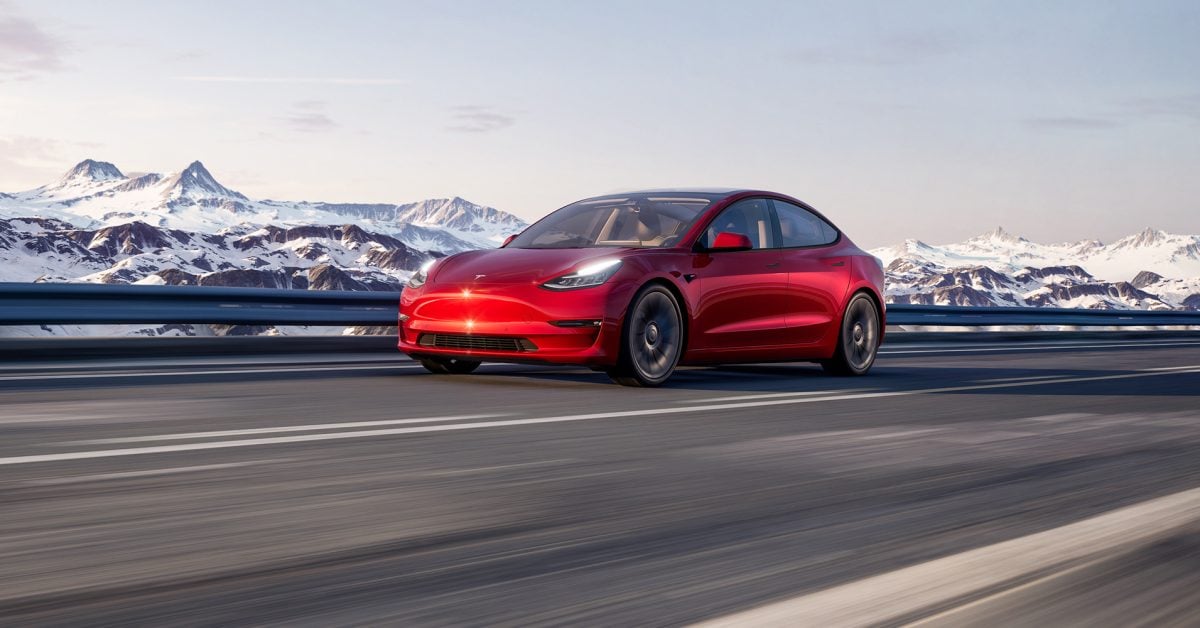
Battery-electric vehicles (BEV) are now hitting an all-time record of 22.2% market share in the state – more than twice the national BEV market share.
Get a sneak peek at the MeganeX Superlight 8K headset and its cutting-edge technology. Explore its compact design and high resolution for an immersive VR experience.

The MeganeX Superlight 8K isn’t called “Superlight” for a random reason: it is actually small and light. I was impressed by how this headset can be so small and lightweight yet so powerful in terms of resolution. I would like to make a comparison with the Bigscreen Beyond, but I haven’t had the occasion to personally test a Beyond, so I can not do that, sorry.
MeganeX claims on its website that the headset has a special design that guarantees no pressure on the face because there is a halo headband that you put around your head that takes care of keeping the headset still on your head. Then the headset is just rotated with a flip-up design so that it gently lies in front of your face. This claim is true, but it carries its own problems. The demo unit was clearly overused, so the flip-up juncture was a bit loose and the headset so was not stable in front of my eyes. I had to keep it still with one of my hands, which not only was uncomfortable, but also resulted in the occlusion of the SteamVR sensors, which made my display often become grey. So the idea on paper is good to deliver a headset that is not uncomfortable on your face and that you can flip up when you have to take a pause from VR, but in reality, it works only as much as the hinge properly does its job, and if over time it becomes loose, then you have a problem.
The headset features two little dials on the bottom, one on the left and the other on the right corner so that you can adjust the focus for both eyes. I performed this operation pretty fast, closing before one eye and then the other one. After that, I had the whole scene in focus.
Visuals
Given the high resolution of the display, visuals are where I concentrated my attention the most during the hands-on. Let’s start from the bright side of them: the resolution is literally incredible and so are the colors. I could perceive no screen door effect (SDE is almost gone already on Quest 3, and this headset has 3x of the pixels of the Quest) and everything looked very crisp. Thanks to the OLED displays, the colors were very bright and the black pixels truly looked black and not greyish like on LCD headsets. I was impressed by this, the visuals were amazing. For comparison, the BigScreen Beyond has 2560 x 2560 pixels per eye, so in this category of compact headsets, the MeganeX SuperLight 8K, with its 3552 x 3840 pixels per eye, truly shines.
But I couldn’t avoid noticing some issues, though: first of all, there was a constant Barrel distortion I noticed in the imagery. The first unit I tried was showcasing a 360 video and this effect was very noticeable (maybe there was something wrong with the device or the video playback). The second unit I tried was showing a 3D environment I could navigate in and the effect was much less evident, but if I attentively looked at some straight lines, I could perceive it. Then the lenses gave a good image in the center, but the periphery of them showed clear aberrations signs, mostly spherical, but also a little bit on the chromatic side. As long as I looked straight, things were fine, but if my eyes started wandering around too much, the effect was evident. The eye box didn’t look too small. Regarding the FOV, I honestly didn’t pay much attention to it, but it looked a bit less than the one on the Quest 3 headset I usually employ. I guess FOV is perceived as a pain point for this headset because it is the only specification not listed on the website.
Germany's car giants were once the envy of the world, but now find themselves facing a myriad of threats.
BMW and Mercedes-Benz have issued profit warnings in recent weeks amid slumping EV sales in Europe and brutal competition in China, while Volkswagen is also facing a reckoning.
On Wednesday VW said net profit for the three months to September 30 plunged by almost 64% to 1.57 billion euros, with a 30% decline to 12.8 billion euros for the first nine months of the year.
A 4% rise in vehicle sales in North America and 16% growth in South America for the nine months was offset by a 1% decline in western Europe and a 12% slide in China — VW's biggest market outside Europe. It now expects to deliver about nine million vehicles this year, or about 240,000 fewer than 2023.
Volkswagen is seeking to cut billions in costs after issuing two profit warnings in three months. On Monday, its top union official said the company was planning factory closures in Germany for the first time, along with pay cuts and layoffs. The Golf and Polo maker is one of Germany's biggest employers with about 300,000 workers
I had the opportunity to test Snap Spectacles 5 in Hamburg before the official European release. Here are my impressions.

Until now, the AR glasses have only been available to developers in the US. However, Snap announced that the latest version of its technological marvel will soon be available in Europe — but only for developers and creative professionals for the time being. I was invited by Snap Inc. to test the Spectacles 5.
The first thing you notice when you put on Spectacles 5 is the ultra-bright 2000 nits clear display. Thanks to the electrochromatic lenses, which can be darkened via the menu automatically, the headset can also be used outdoors in bright daylight — a really impressive feature!
Although the colors and resolution are far from perfect, the glasses already offer probably the best AR display available for the money.
Operation is entirely via precise hand tracking and gestures, which works surprisingly well after a short period of familiarization. The technology only reaches its limits in fast-paced rhythm games.
Two cameras in the front control all 6-DOF tracking and detect your surroundings. Two invisible infrared cameras on the bottom of the headset can also detect hands outside the central field of view. This feature is ingenious and will become the gold standard for everyday devices.
By the way, Snap offers spectacle wearers the option to insert their own prescription clip inserts into the inside of the Spectacles. However, I have also seen people pull the Spectacles over their own glasses if they were small enough. I don't know if and how much this can cause scratches.
If the rules are adopted, manufacturers would be forced to produce enough electric bikes to receive enough credits, and a company could buy more credits from other manufacturers if it wants to sell more gas-powered motorcycles.

California made climate history in 2020 when the state became the first in the nation to create an electric vehicle mandate, which eventually became a key part of the Biden-Harris climate agenda. Now the state wants to do the same for motorcycles, despite the problems the EV push has faced over the past four years.
California made climate history in 2020 when the state became the first in the nation to create an electric vehicle mandate, which eventually became a key part of the Biden-Harris climate agenda. Now the state wants to do the same for motorcycles, despite the problems the EV push has faced over the past four years.
The California Air Resources Board will vote next week on a proposal that will require motorcycle manufacturers to make 10% of the bikes they sell zero-emissions by 2028 and 50% by 2035. The rules, according to CalMatters, will also include restrictions on gas-powered motorcycles’ emissions.
If the rules are adopted, manufacturers would be forced to produce enough electric bikes to receive enough credits.
The credits could be bought and sold, so a manufacturer could reduce the number of electric bikes it sells if it buys enough credits from another manufacturer who has some available. The agency predicts that more than 280,000 electric or hydrogen motorcycles will be sold in California by 2045.
While CARB believes that forcing manufacturers to produce bikes will automatically sell those bikes, the EPA’s tailpipe emission standards were passed with the same expectation. However, waning consumer demand has left dealerships with more EVs than they can sell, and many automakers are walking back their commitments.
CalMatters quotes a few motorcycle enthusiasts, and they all express concerns about the plan. They say the short range of 100 miles, lack of charging infrastructure, and lack of an engine rumble make the E-bikes. The nonprofit publication notes that e-motorcycles make up 1% of all motorcycle sales, and motorcycles of all types make up less than 0.5% of all vehicle miles traveled in California.
VR veteran Jesse Schell predicts that mixed reality and AI will lead to a fascinating new genre of games.

VR pioneer, author, and studio founder Jesse Schell was interviewed by Meta on the occasion of the tenth anniversary of Reality Labs. In this interview he talks about the beginnings, the present and the future of virtual reality.
When asked what he is most looking forward to in the next ten years, Schell said:
"The thing that’s going to change everything the most is going to be AI, and there’s going to be this crossover between AI and virtual reality that I think people aren’t going to expect because the power that AI brings is going to be these in-game characters that behave in a realistic way.
They speak coherently. They can have a conversation with you, and they can have real emotions, and that’s going to all seem very real. And combining that with the immersion of VR so that these characters are in the room, in the space, in the place with you—I think we’re going to see a whole new medium of story-based games that are largely about talking."
Jesse Schell predicts a genre he calls adaptive in-home story games and gives an example:
"Imagine a mixed reality game. You put on your headset, and you’re just looking inside of your house, and the doorbell rings. So you get up, and you go to your physical door. You open the physical door, and standing outside is a virtual character, who says, 'Hey, I need to come inside.' They’ve got a bag of groceries. And you follow them into your kitchen because the headset knows how your whole house is laid out. So the character starts putting these items down on the counter and says, 'I need you to help me.' And you start helping them. You cut the virtual bread loaf and slice vegetables and get everything ready. [...]
While that’s happening, the character explains to you what’s going on. 'The problem is up in your attic. There are these creatures, and you and I, we’re going to go up there and we’re going to get them, but first we need to finish getting the bait ready."'
Schell believes such mixed-reality experiences could be possible in a few years, with stories and AI characters that adapt and improvise to spatial conditions.

Some of the first hands-ons with Survios’ upcoming Alien: Rogue Incursion have emerged, revealing a promising look at one of the biggest entries in VR this year.
In case you haven’t been following along, Alien: Rogue Incursion is coming to all major VR headsets this December, letting you take on the role of Zula Hendricks, a resilient former Colonial Marine with a complicated past on a dangerous mission to rescue friend and former squad mate.
Tackling the ship’s Xenomorph infestation, you fight alongside your synthetic companion Davis 01, tasking you to fight your way to the heart of the Gemini Exoplanet Solutions research facility and confront the secrets waiting within. There, we’re promised “deadly horrors” which could spell the end for humankind.
Now, a few outlets have published the first hands-on reports with Rogue Incursion.
In Leanne Butkovic’s preview for IGN, she said it “certainly had classic moments of Alien horror.” There’s no “but” there either. Butkovic goes on to praise the Rogue Incursion’s immersive environment, smart narrative beats, and intuitive weapons and tools.
It’s doesn’t appear to go too hard on wave shooter mechanics either, as Butkovic says the game “wasn’t endlessly frenetic.”
“If anything, it deliberately moves slowly in parts to spatially acclimate, to give people like me who can’t help but touch things that are laying around, a chance to explore and discover the story of this Alien property for myself,” Butkovic said.
The Renault 5 EV pays homage to its roots while charting a course to the future of electric and digitally connected vehicles.
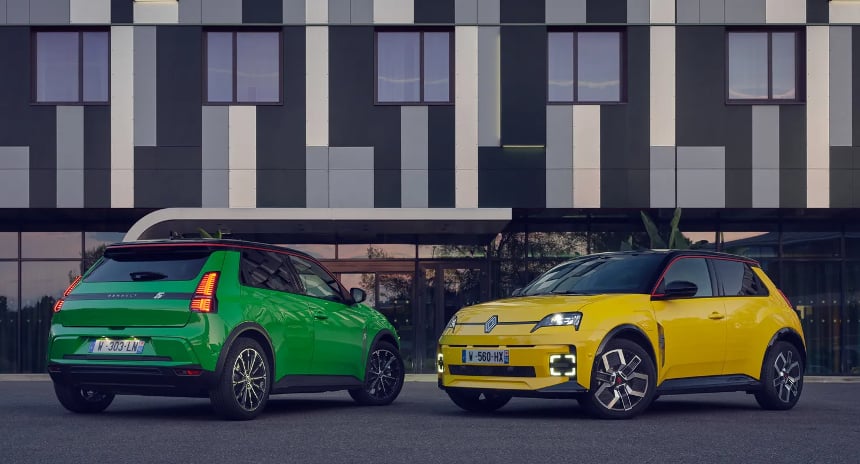
Wired magazine does not devote a lot of time to electric cars, so when it runs a story saying the new Renault 5 EV is will be a “smash hit,” it’s time to sit up and pay attention. Now, before we get carried away, Wired gives the Renault 5 a rating of 8 out of 10 — good, but not perfect. Range could be better and back seat passengers may find leg and hip room a little tight, but there is a lot to love about the new car, starting with styling.
“The new Renault 5 EV is unashamedly nostalgic in look, mining a design trend that’s been around so long that retro is almost retro,” Wired says. “Yet when you see it in the flesh for the first time resistance is futile. Here, surely, is the electric car that will demolish any lingering preconceptions, a surprisingly sophisticated conduit for all-round feel-good vibes that’s packed with big-car tech.” That is high praise indeed. Renault boss Luca de Meo couldn’t agree more. “Some products are magical,” he said. “You don’t have to hold endless discussions, everybody is always in agreement on what needs to be done. And they do it. There’s no inertia.”
Renault 5 EV Shines
A little history is called for. The Renault R5 first appeared in 1972 as a competitor to the Fiat 127 (which later was produced in Russia as a Lada before it reappeared later as the Yugo). From 1976 until 1983, it was sold in North America as Le Car, a rather sly way of emphasizing its Gallic origins to customers who would not know an R5 from an avocado. The R5 was no track day star. It came with a 782cc 4-cylinder engine. A 956cc engine was optional and a 1289cc engine was made available in 1974. Despite its modest power, the R5 was the best selling car in France (and much of Europe) from 1972 until 1986. It was cheap to buy, economical to operate, rugged, and one of the first cars to feature a hatchback instead of a trunk.
Wired writes, “The new R5 aims to brighten your day via its candy colors, and an exterior and interior design that prompts an expertly executed Proustian rush. The silhouette might be familiar, but the new car has fuller proportions and imaginative postmodern touches galore. There’s a cheeky little four corner graphic in the headlights that ‘winks’ as you approach. The foglights below mimic that motif, while the vertical taillights are another echo of the original. They’re now designed for a degree of aerodynamic efficiency that would have boggled the minds of Renault’s engineers back in the day. The chunky wheel arches call to mind the mid-engined R5 rally car, and the new car’s roof can be had in a variety of treatments. It’s a five door car but the rear door handles are cleverly hidden away. And the old car’s hood vent reappears here as a state-of-charge indicator. Each strip represents 20 percent of the available energy.”
Fans of the R5 will recall that Renault stuffed a turbocharged engine into the car where the rear seat used to be, widened the rear axle by a foot or more, and created one of the quickest road cars you could buy at the time. The car was a beast to drive, with many test drivers reporting the turbo was more like an on/off switch. Controlling the available power was tricky, even for professional drivers, but the performance was exhilarating, to say the least.
Specs & Prices
The new R5 uses a bespoke platform, called AmpR, so it has a flat floor and longish wheelbase despite measuring only 3.9 meters (12.8 feet) in overall length. The battery’s case helps stiffen the structure. The new R5 comes with two batteries — 40 kWh and 52 kWh. There are also three motors available — 70 kW, 90 kW, and 110n kW — which are equivalent to 94, 121, and 150 hp, respectively. Both batteries contain prismatic NMC cells from Renault’s battery partner AESC. According to Renault, both the vehicles themselves and the batteries will be manufactured in northern France. Only the larger battery will be available at the start of production.
Prices start at £22,995 ($29,830) with uprated models selling for £30,000 ($38,890), yet the R5 is not a cheap car in terms of its engineering specs. Multilink rear suspension and disc brakes all-round are unusual in this class, suggesting a big-car character in a compact package, Wired says. A heat pump is standard. Maximum charging power is 100 kW — enough to replenish the battery from 15 to 80% in 30 minutes. There is also an 11 kW AC charger built in. Renault says cars fitted with the 52 kWh battery have a range of 255 miles WLTP. An equivalent EPA range would be right around 200 miles, although Renault has no current plans to market the car in US.
SUVs are less efficient and emit more CO2 yet are still outselling cars regardless of powertrain.

By sales, SUVs have surpassed sedans, wagons, hatchbacks, and minivans, and last year they also accounted for 53% of battery-electric vehicle sales and 83% of plug-in hybrid sales. Conventional car body styles still accounted for 43.4% of EV sales, but just 10% of plug-in hybrid sales.
SUVs are generally heavier and less aerodynamic than cars, which impacts efficiency of internal-combustion and electric powertrains alike. That's led to differing analyses of the relatively high number of plug-in SUV sales.
The DOE has a fairly positive outlook, saying in September that a small electric SUV with 300 miles of range is estimated to have half the lifetime greenhouse gas emissions of a comparable gasoline vehicle. In 2021 it said that popular small SUVs were a meaningfully better choice than larger models in terms of overall emissions—and that EVs and plug-in hybrids were better still.
Ford and LG will move production of EV batteries for the Ford Mustang Mach-E to their Michigan facility in 2025.

Under a new agreement inked between Ford and LG, the companies will move production of EV batteries for the Ford Mustang Mach-E from Poland to its Michigan facility in 2025. This (of course) has everything to do with the IRA and tax credits.
“To capitalize on competitive market conditions,” the new agreement moves Ford Mach-E battery production to the US, where those batteries can take advantage of America’s various incentives. Over in Europe, LG plans to take advantage of incentives over there by supplying a total of 109 GWh of batteries to Ford for its electric commercial vans starting in 2026.
“These agreements attest to our experience and expertise in powering commercial vehicles with innovative battery technologies designed to handle extreme user environments,” said David Kim, CEO of LG Energy Solution. “Capitalizing on our local production capacity, we will secure leadership in the European market and deliver unmatched values to our customers through advanced battery technologies that effectively address diverse needs.”
Is Hyundai bringing its most affordable EV to the US? For the first time, Hyundai’s Casper Electric was spotted driving...
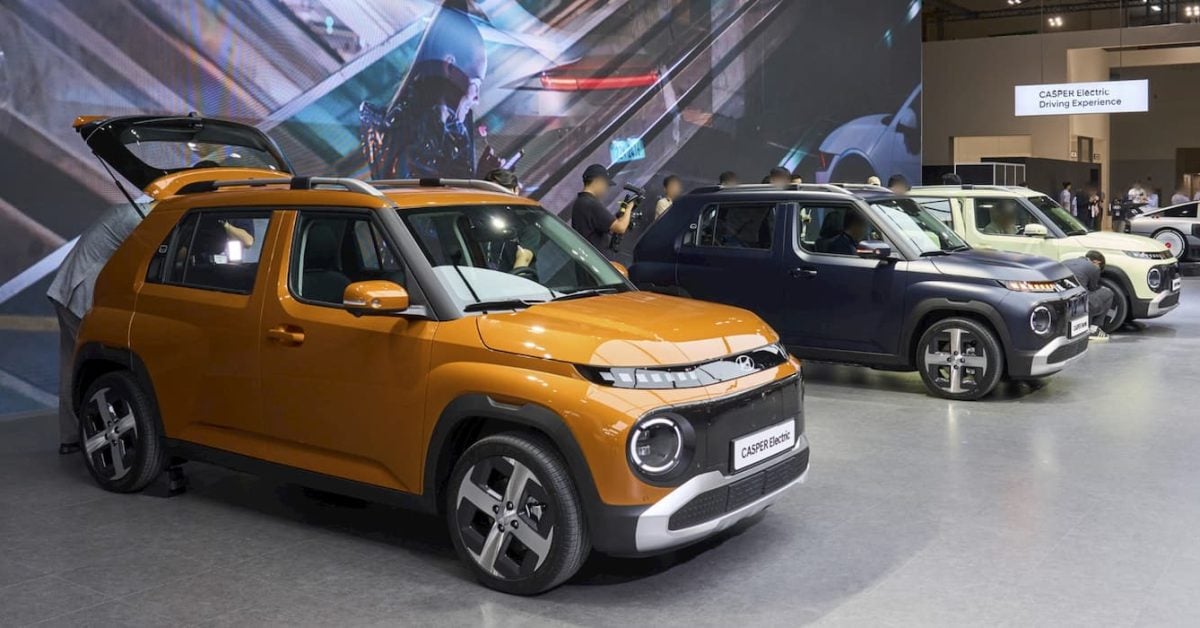
Is Hyundai bringing its most affordable EV to the US? For the first time, Hyundai’s Casper Electric was spotted driving on US streets. Will the low-cost EV launch in the States?
After opening pre-orders for its smallest and most affordable in July, starting at just $23,000 (31.5 million won), the Casper Electric is already Hyundai’s best-selling EV in Korea.
Hyundai followed it up by launching an even cheaper Casper Electric Premium model, starting at $20,000 (27.4 million won). With subsidies, Hyundai said the new compact electric SUV is available for as little as $7,300 (10 million own).
According to Hyundai, buyers are flocking to the new EV thanks to its “ample driving range” and low starting price.
The Casper Electric is rated with up to 196 miles (315 km) driving range in Korea. In Europe, the mini electric SUV is known as the Inster EV. It starts at under $27,000 (25,000 euros) and has WLTP driving range of up to 221 miles (355 km)